|
|
| |
| |
| |
|
| |
|
|
| |
|
| uses Google technology and indexes
only and selectively internet - libraries
having books with free public access |
|
| |
 |
| |
|
|
| |
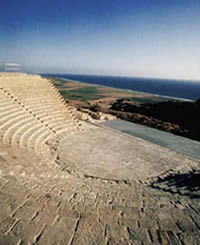 |
|
| |
|
 |
 HISTORY OF CYPRUS HISTORY OF CYPRUS |
 |
STRABO Geographica
Strabo, born at Amaseia in Cappadocia in b.c. 66, completed the seventeen books of his Geographica in Rome about A.D. 23. This account of Cyprus translate from Book xiv. 6 (cc. 681—685), ed. A. Meineke, 1866.
Read more about Cyprus from Strabo Geographica...
|
 |
CYPRUS IN THE MIDDLE AGES
Cyprus: Historical and Descriptive. From the earliest times to the present day. New York, 1878
The career of Cyprus is without a parallel in the history of the world. Here we find established in the very heart of the East, on Phœnician Grecian
foundations, a mighty kingdom distinguished by its high display of all that adorned the finest age of chivalry, and in spite of all the agitations which beset the outer world, retaining these traditions till the close of the sixteenth century...
Read more about Cyprus in the Middle Ages from book...
|
 |
LETTERS FROM THE KING OF ALASIYA
The identification of Cyprus with Alashiya was confirmed by the 2003 publication by Goren et al. of an article in the American Journal of Archaeology detailing the petrographic and chemical analysis of a number of the Amarna and Ugaritic letters sent from Alashiya. These examinations of the provenance of the clay used to create the tablets indicate that Syria could not be the location of Alashiya, while clay on Cyprus is a good match.
Read letters...
|
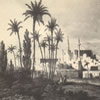 |
O. D'ANGLURE
Orient d'Ogier VIII., Seigneur d'Anglure, Marne, arr. Epernay, visited Cyprus 1395—96. His travels were printed in 8vo, Troyes, 1621, and Paris, 18mo, 1858. So much as relates to Cyprus, and is translated here, was printed afresh from the original manuscript in the National Library at Paris by M. L. de Mas Latrie, Histoire de l'île de Chypre, II. 430—432. The later edition by F. Bonnardot and Aug. Longnon, 8vo, Paris, 1878 (Société des anciens textes), is somewhat fuller, and has a good biographical and genealogical preface
Read more about Royal Court of Cyprus Kingdom in XIV century
|
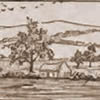 |
MALLOCK W. H.
In an enchanted Island., London, 1889
Read chapter IV. The Thereshold of a new life
|
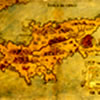 |
GIOVANNI MARITI
Travels in the Island of Cyprus
Chapter I.
A general view of the island and kingdom of Cyprus
Cyprus, an island in the Mediterranean Sea, and dependency
of Turkey in Asia, lies in long. 52' 45' and lat. 35'' 30',
between the coast of Syria and that of Cilicia now called
Caramania. It has had various names. Pliny, v. 31, calls
it Acamantis, Cerastis, Aspelia, Amathusia, Macaria, Cryptos
and Colinia.
Read chapter I. Travels in the Island of Cyprus
|
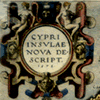 |
PIETRO CASOLA
Pilgrimage to Jerusalem in the year 1494
CHAPTER IX.
On Wednesday, the 9th of July, at sunrise, we set sail with what little wind remained, and made good progress in that Euxine Sea, now called the Sea of Natalia, from a city held by the Turks, which is called Natalia.(1) When the sun was somewhat up, however, the sea so settled into a calm that every man feared to die of heat, and this continued until night; then a fair provenza arose and good progress was made that night.
Read chapter IX.
|
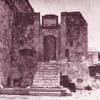 |
GEOFFREY DE VINSAUF
Itinerary of Richard I and others to the Holy Land
Chapter XXX - XL.
Richard the Lion-Hearted Conquers Cyprus. 1191
After these things were done, the king proclaimed an edict by herald, that whoever of the inhabitants were disposed for peace, might go and return as they liked without harm from his men, and enjoy perfect liberty; but that whoever held the king as an enemy, should take care not to fall into his hands, or those of the army, for he would certainly treat him as a foe, and that he would prove himself such as they stood to him.
Read chapter XXX - XL.
Full text of this chronicle you may read here |
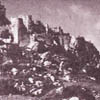 |
GEOFFREY DE VINSAUF
Itinerary of Richard I and others to the Holy Land
Chapter XXIX. — Of the many misfortunes which befel the Holy Land, especially through the emperor of Cyprus
Isaac Comnenos was the last ruler of Cyprus before the Frankish conquest during the Third Crusade. He was a minor member of the Comnenos family, a great nephew of the Byzantine Emperor Manuel I Comnenus (1143-1180) and a grandson of the Sebastocrator Isaac. He should not be confused with the Byzantine emperor Isaac I Comnenus (ruled 1057 - 1059).
Read chapter XXIX.
Full text of this chronicle you may read here |
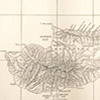 |
BIDDULPH, Robert, Sir.
Cyprus
(Read at the Evening Meeting, November 11th, I889.)
The island of Cyprus is the third largest in the Mediterranean, being inferior in size only to Sicily and Sardinia. Its area is 3584 square miles. Its principal features are two mountain ranges, running pretty well parallel to each other from east to west.
Read more... |
 |
BENEDICT OF PETERBOROUGH. How Richard, king of England, seized and conquered Cyprus
In the same month of April the king of England demolished the castle which he had built in the place called Mategriffon, and on Wednesday in Holy Week (April 10, 1191) he and all his army set sail from the port of Messina, on board 150 large ships, and 53 galleys. On Friday a terrible storm came up from the south, about the ninth hour of the day, and scattered his fleet.
Read more... |
 |
NEOPHYTUS. The Words of Neophytus, a Priest and Cloistered Monk, concerning the Misfortunes of the Land of Cyrpus
A cloud veils the sun, and a mist mountains and hills, and these for a while shut out the warmth and bright ray of the sun; and us too, for now twelve years, a cloud and mist, of successive calamities which have befallen our country, wrap round.
Read more... |
 |
SIR SAMUEL WHITE BAKER. Cyprus as I saw it in 1879. London, 1879
Content
Read book |
 |
MALLOCK W. In an enchanted island. London, 1889
I suppose that this book, if classified in the usual way, would be called a book—a very slight book—of travels ; but I would rather call it myself a record of a fragment of life which was, by the magic of its unfamiliar surroundings, detached like a dream from the things of the modern world—from steam, from progress, from the glorious march of democracy— and suddenly came between them with the lulling and luxurious charm of an interlude from an opera heard between the acts of a farce.
Content
Read book
|
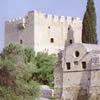 |
Wolff, R. L.; Hazard, H. W. (ed.) The later Crusades, 1189-1311
(1969)
Chapter XVII: The Kingdom of Cyprus, 1191-1291, pp. 599-629
From the moment when Richard the Lionhearted arrived with his fleet off Limassol
on May 6, 1 1 91, the island of Cyprus was destined to take an increasingly
large place in crusading history.
Read Chapter XVII
|
 |
GIOVANNI MARITI. Travels in the Island of Cyprus
From editor’s preface: The Abbé Mariti arrived in Cyprus from Leghorn February 2, 1760, and left it on his return to Florence, October 6, 1767. His work owes little to previous writers on Cyprus: he had read Bordone, Lusignan and probably Meursius, but he relies almost entirely on his own notes of what he had seen and heard. And herein lies its value, for he is observant and conscientious. The book stands as the best account of the condition of Cyprus in the third quarter of the last (XVIII) century.
Content
Read book
|
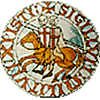 |
FRIEDERICH WERNER. The Templars in Cyprus
From editor's preface to the present edition:
In the "Templar in Cyprus" Werner ascribes to a Carmelite body, calling themselves "Sons of the Valley", the downfall of the Templar fraternity, designed with a view to the establishment of a more extended system of a mysticism (which he calls the "Valley of Peace"); to make way for which the poem hints that the Templars are to be destroyed. Werner was a Freemason, and his religious notions, of which he makes "SIR ROBERT" the mouthpiece, where at the date of his writing this poem, of a theosophic order. In fact he aimed, at that time at establishing a New Religion of his own invention; though ultimately he became a Priest, and preached in Roman Catholic pulpits.
Read book
|
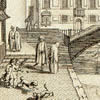 |
EKATERINI CH. ARISTIDOU. Venetian Rule in Cyprus !1474-1570)
Venetian rule in Cyprus is undoubtedly one of the most important but also most decisive periods in the island’s history that has not been sufficiently studied by historians, even though historical evidence for the period is plentiful and is very interesting for modern Hellenism.
Research, through the documents of the State Archives in Venice, which are indeed the most reliable source of information in studying the Venetian rule in Cyprus, has brought to light new data which not only make such studies possible but also provide interesting and important evidence for the Venetian era.
Read more
|
 |
CLAUDE DELAVAL COBHAM
Exerpta Cypria
From editor's preface:
Τhe papers collected and arranged in this volume, some of which were first printed between 1892 and 1895 as a supplement to the Owl, a newspaper published at Nicosia, comprise extracts and translations from books treating of Cyprus, travels, histories and others. Some of these are rare, others costly or cumbrous, and most of them are, in Cyprus at least, difficult of access. Of some too the language is not seldom a bar to comfortable and profitable study. I have tried to give translations which, while rigidly exact, will preserve something of the spirit and form of the original. The omissions are few, and generally indicated, but in no case has anything been excluded which directly concerns the island. The names of persons and places are left in the authors' spelling. To each extract is prefixed a brief note, giving a few particulars concerning the book and its writer, and the date of his visit to Cyprus.
Read book
|
|
 |
|
|